Pan Seared Pork Chops are a simple and savory “poor man’s steak.” This childhood favorite combines pork chops and Worcestershire sauce to create a unique glaze with subtle sweetness. Tender, flavorful, and no marinating necessary so dinner is ready in under 30 minutes!
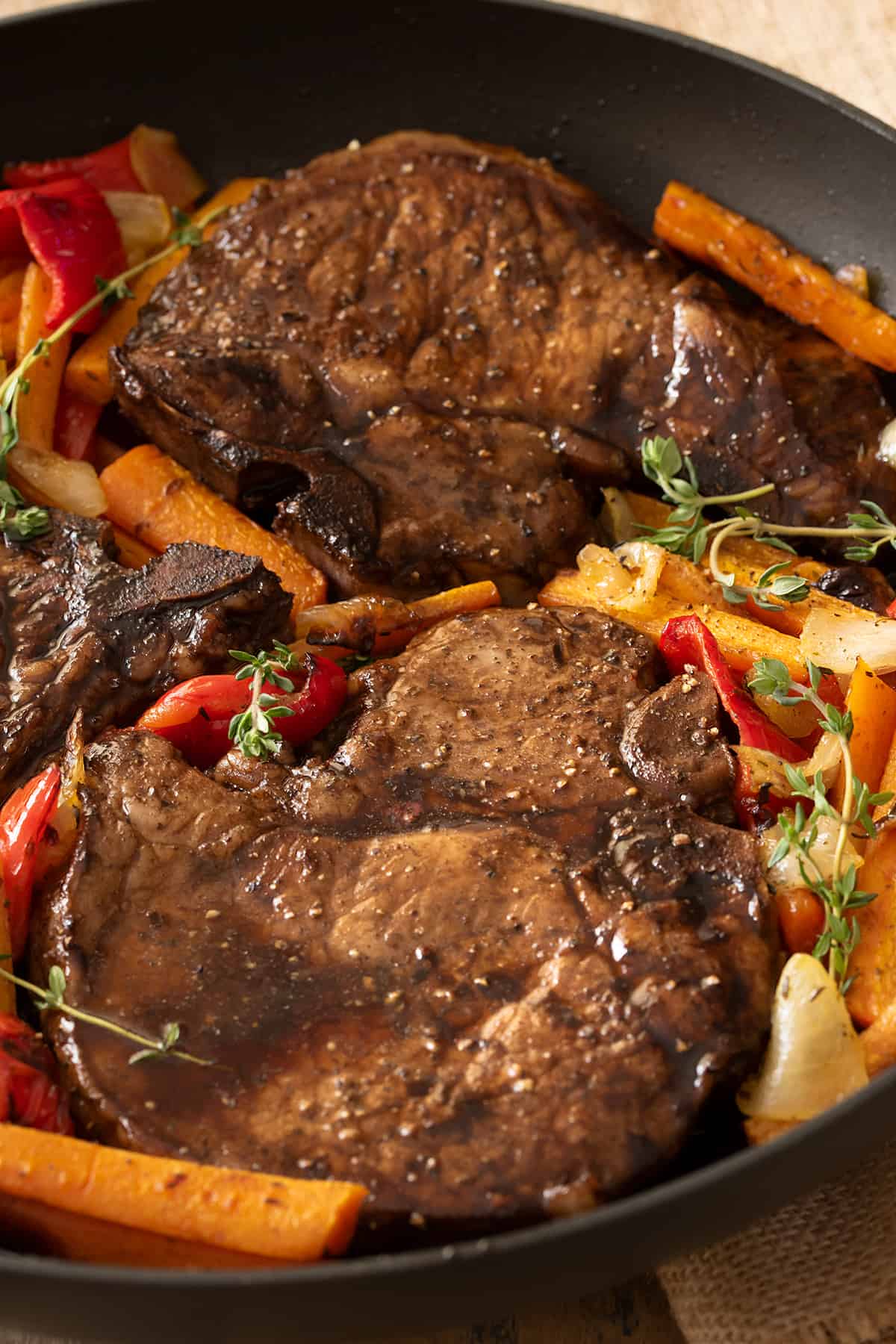
It’s no big surprise to me that I grew up with such a passion for cooking and baking. I was raised by people who love food. Some of my fondest childhood memories include my mother’s cooking. Her Crispy Baked Pork Chops and Shrimp Etouffee are meals that I’ve worked diligently to perfect in my own kitchen to share with my own family.
And then there’s my childhood favorite, Pan Seared Pork Chops! These are my mother’s secret weapon and, in my opinion, the cure all for any bad day. Simple and savory, it’s a dish that’s perfectly refined. Despite consisting of only two ingredients, pork chops and Worcestershire sauce, the amount of flavor is off the charts.
The secret? It’s actually more than just mom magic. By simmering the Worcestershire sauce down to a glaze, it brings out nuanced undertones such as molasses and tamarind. When cooked properly, the pork has a beef-like quality, earning it the nickname “poor man’s steak.” It’s rich in flavor, fork tender, and smells heave divine.
These pork chops are AMAZING when done right but can be super finicky. The problem lies in how much juice has been injected into the pork chops before they ever hit the grocery store shelves. Super juicy pork chops mean the glaze is hard to cook down properly, which results in overcooked pork chops. But don’t fret! I’ve got a work around to solve that conundrum.
How to choose pork chops?
The pork chops must be BONE IN and ¾ inch thick for best flavor. Look for chops that have a layer of fat around the outside and near the bone as rendering the fat will provide the most tenderness and flavor. I find that 1-inch pork chops tend to require more work to get the bone area cooked, which may make the outside tough.
Yes, you can use boneless. However, the fat from the boneless variety won’t simmer into the glaze, which adds more flavor and tenderness overall.
That being said, bone in can occasionally be a little finicky in that the meat right next to the bone still looks pink. This is why the thickness and temperature are important. I always check the meat next to the bone for doneness. Often times, it still has a little pink to it, which leads to overcooking. Pork should be cooked to an internal temperature of 145 degrees.
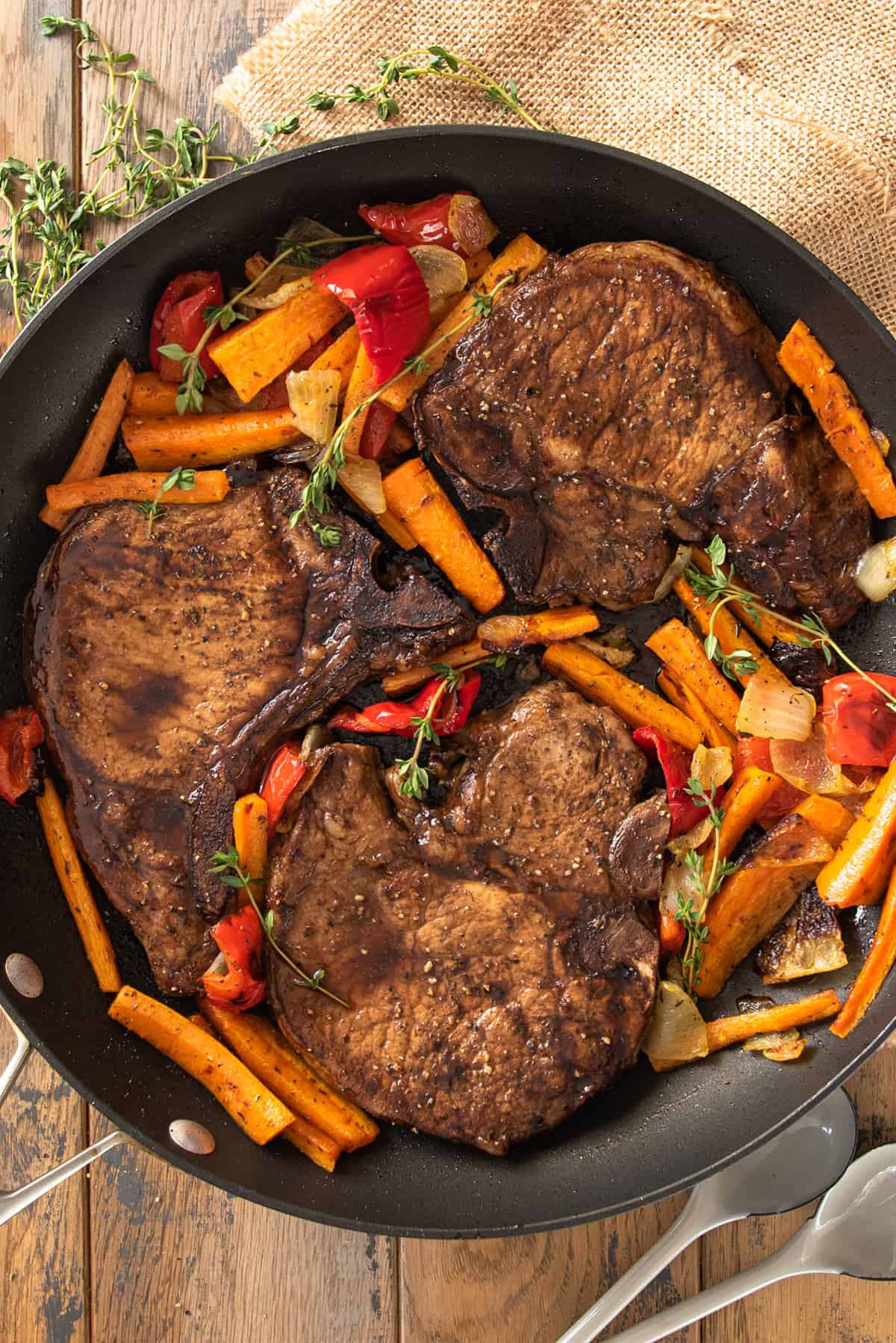
Tips for Perfect Pork Chops on the Stove
- Crowding the pan can kill this recipe. I find that 3 chops in a 10–12-inch skillet is perfect. If you have to layer them, the chops won’t cook evenly. If I have more, I use a second pan or make in batches.
- An instant read meat thermometer is your best chance for success. Test the meat next to the bone since that is usually the last to cook. Pork is safe to eat at 145F.
- The skillet needs to be very hot to get a good sear on the pork. I preheat my skillet for a few minutes and then start the Worcestershire reduction before adding the pork chops. If you’re finding the chops aren’t done within the suggested timeframes, your skillet probably isn’t hot enough.
- Some pork chops will release more juice than others, so it’s important to pay attention to the cook times rather than how thick the sauce is. If the sauce starts to become too thick or burn, add a bit of water as necessary.
- You can also remove the pork chops to continue reducing the Worcestershire sauce, but you won’t get quite as much of that deep, dark molasses flavor that comes from the reduction. It will still be delicious though.
- You can make either in a non-stick skillet or make cast iron pork chops with this method.
Serving and Storage Suggestions
What to serve with pan seared pork chops? This recipe is not only fast, but extremely versatile. As pictured, I often add some oven roasted potatoes and roasted carrots or steamed green beans, but something comforting like cinnamon apples or squash casserole would be lovely. Or try with crispy onion strings and refreshing broccoli apple salad.
Storage: Store in an airtight container in the refrigerator. Lasts 3-4 days.
More Delicious Recipes to Try
Cooking Video
See how easily and quickly this recipe comes together!
FAQ
Bone in pork chops tend to dry out less and remain tender while pan searing. However, boneless cook more evenly.
The amount of time depends on the thickness.
1″ thick: about 5 minutes per side.
¾″ thick: 5 minutes first side and 3 minutes second side.
½″ thick: about 3 minutes per side.
The most tender pork chops start with better cuts of meat. Look for about ¾ inch even thickness, bone-in, with a fair amount of fat surrounding the muscle structure. Cook to an internal temperature of 145 degrees and let the chops rest before serving.
This recipe can be cooked in either a cast iron skillet or a non-stick skillet. Make sure the cast iron is well seasoned and you may need to add a bit more oil.
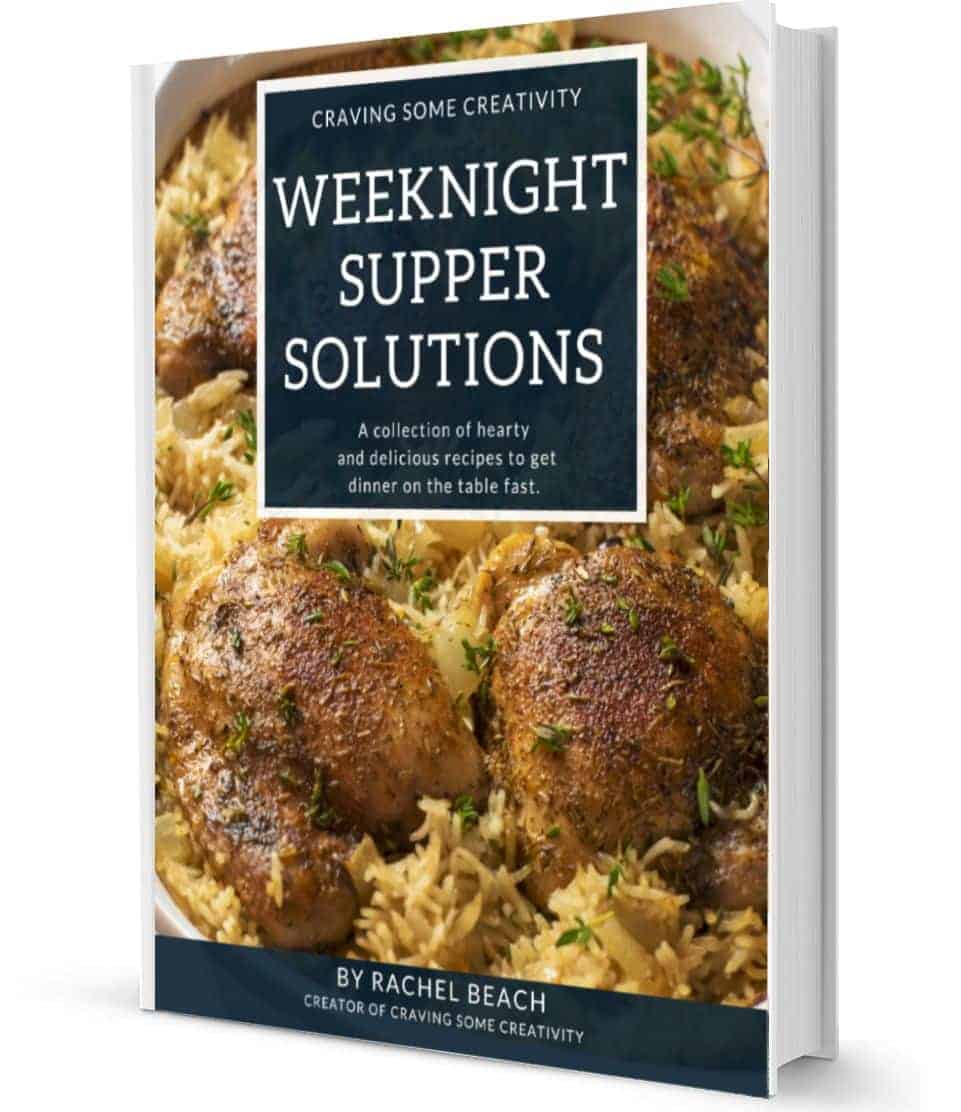
Not Sure
What's For Dinner?
Signup for recipe updates and get a free cookbook of Easy Weeknight Supper Solutions!
More Recipes from Our Kitchen
PS. If you make this recipe, leave a COMMENT AND A STAR RATING in the comments section at the bottom and be sure to take a photo and tag it #cravingcreative on Instagram! I appreciate you for taking the time to read about me and my family recipes.
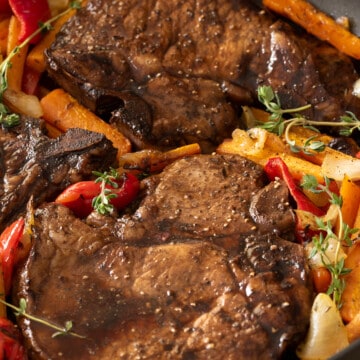
Pan Seared Pork Chops
Ingredients
- 2 tablespoon Worcestershire Sauce
- 1 tablespoon Water
- 1 tablespoon Vegetable Oil Only if you have a pan that is prone to sticking.
- 3 Bone-In, ¾ inch thick Pork Chops
Instructions
- Rest the pork on the countertop while the pan heats up (about 5 minutes, but more is better). In a large skillet or cast-iron pan, heat oil over medium high heat. The pan needs to be hot to get a good sear on the outside. With a good, non-stick skillet, I skip the oil.
- Once the pan is heated up, add Worcestershire sauce and water. Wait 2-3 minutes to let the sauce warm and start to reduce.
- Lay the pork chops in the pan and swirl around. Cook for about 5 minutes on the first side, flipping after the edges brown slightly. Cook about 3 minutes on the second side. Thinner or thicker chops will change the cook times. If the sauce starts to become too thick or burn as it cooks, add a little water as necessary.
- If necessary, check the center next to the bone for doneness. It can be pink but should not look raw or undercooked. Pork chops can be cooked to 145 degrees and I highly recommend an instant read thermometer.
- Remove the chops from the skillet, but don't turn off the heat. Continue cooking down the juices to a glaze. The Worcestershire sauce should bubble and stay (the bubbles don't break like they do with boiling water). The amount of time required depends on how much juice was in the pork chops, about 2-7 minutes.
- Dredge the pork chops in the remaining sauce and set on a plate. Let the pork chops rest for a few minutes prior to serving.
Video
Recipe Notes
- Crowding the pan can kill this recipe. If I have more than 3 chops, I use a second pan or make in batches.
- An instant read meat thermometer is your best chance for success. Test the meat next to the bone since that is usually the last to cook. Pork is safe to eat at 145F.
- The skillet needs to be very hot to get a good sear on the pork. I preheat my skillet for a few minutes and then start the Worcestershire reduction before adding the pork chops. If you’re finding the chops aren’t done within the suggested timeframes, your skillet may not be hot enough.
- Some pork chops will release more juice than others, so it’s important to pay attention to the cook times rather than how thick the sauce is. If the sauce starts to become too thick or burn, add a bit of water as necessary.
- You can also remove the pork chops to continue reducing the Worcestershire sauce, but you won’t get quite as much of that deep, dark molasses flavor that comes from the reduction. It will still be delicious though.


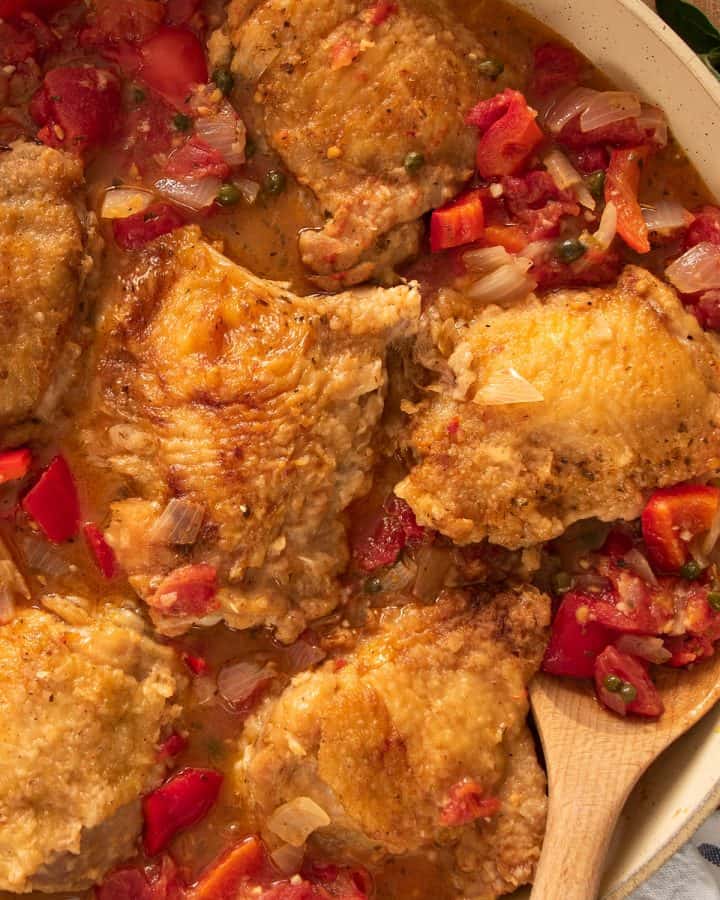
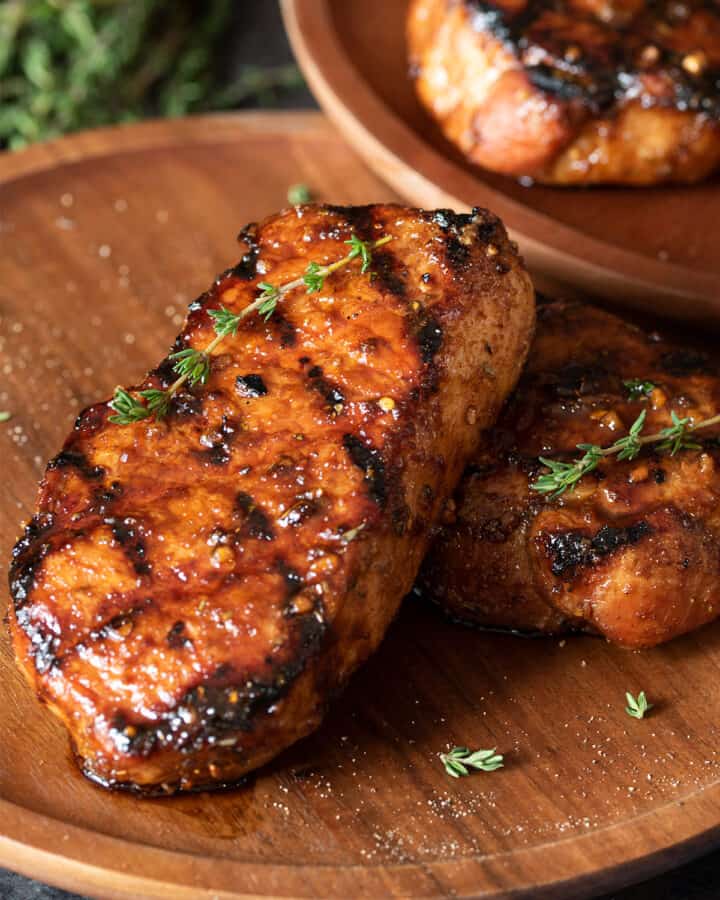
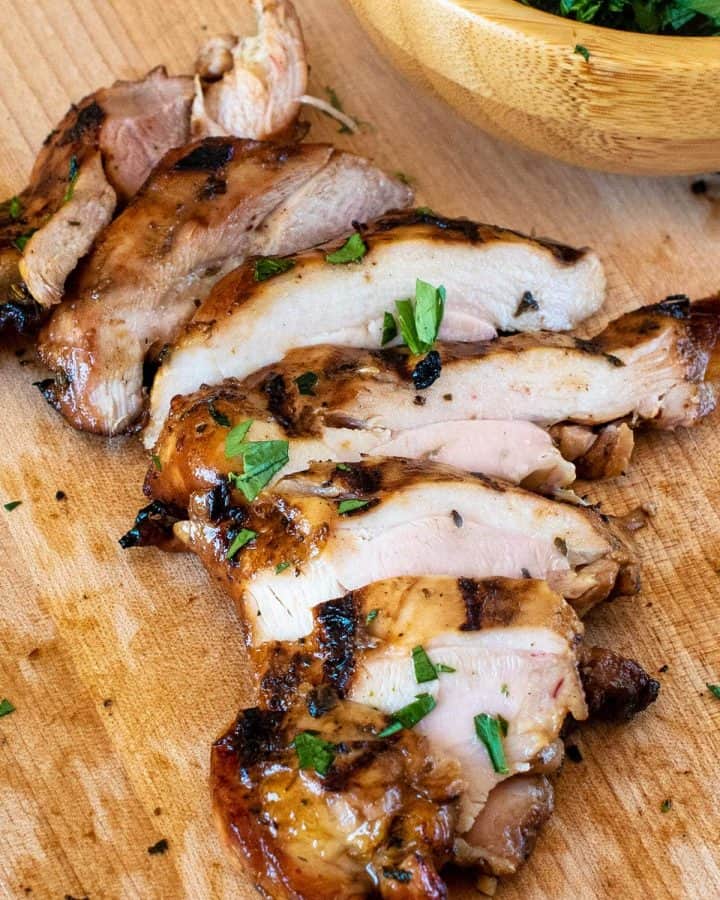
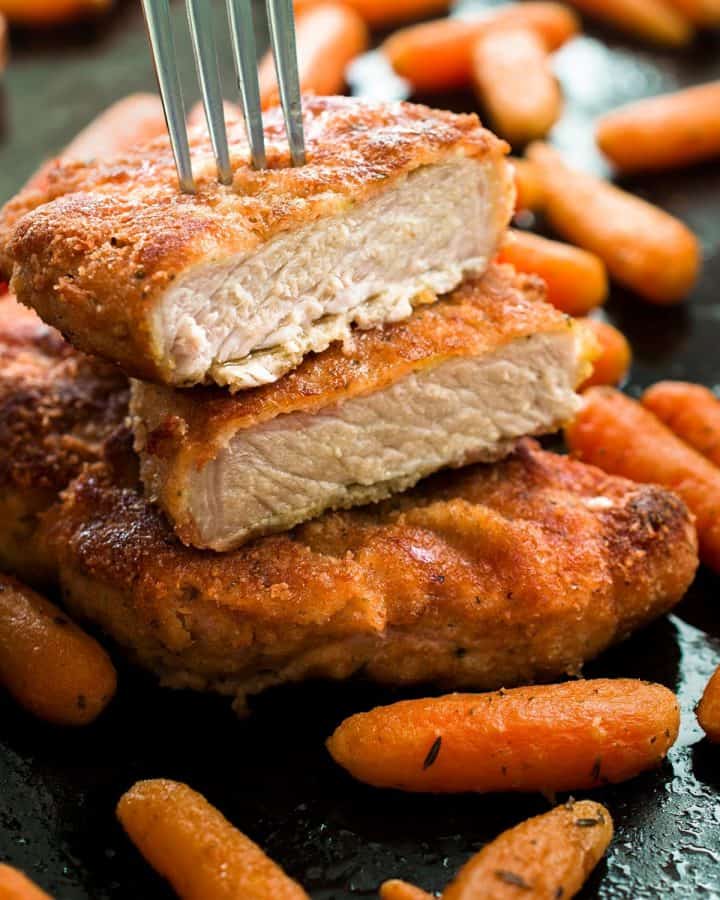
Jess says
Very easy to make with only 3 ingredients to keep track of.
Jennette says
I made these just now to avoid wasting pork chops and it was so easy and quick. Delicious!
Haily says
Absolutely loved it!! Added some steamed veggies and mashed potatoes on the side hubby LOVED IT!!!
Martin says
This was so delicious. My very picky teenager gobbled it up and so did I. This will definitely be my go to pork chop recipe going forward.
Rachel says
My kids love this recipe! It’s in the dinner rotation bc pork chops are so inexpensive right now. I have 2 teenagers, so I double the recipe.
Lena says
This was such a good recipe i did add a shallot for a-little more flavor
Robert says
Yummy. Just whipped this dinner up with what I had on hand. It was great and my family loved it. It was quick as well
Makenna says
Simply delish!
Melissa says
The whole family loved it!